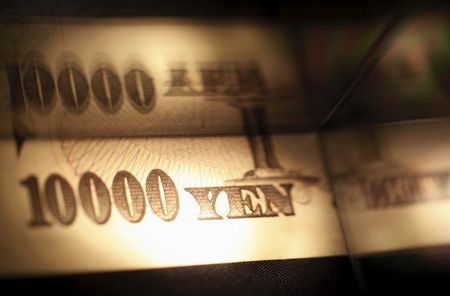
Investing.com – Japanese government officials continued to verbally warn of possible intervention in currency markets, especially after better-than-expected U.S. inflation data showed the Japanese yen at its lowest level since 1990.
On Wednesday, the pair rose to 153.24, a new 34-year high. The jump occurred mainly against the backdrop of a strengthening dollar, which reached a five-month high.
But USDJPY retreated from those highs in Asian trade on Thursday, hovering around 152.84 by 10:23 pm ET (0223 GMT). The drop came after Japanese Finance Minister Shunichi Suzuki said recent “excessive” movements in foreign exchange rates were “undesirable” and that he was in regular contact with Vice Finance Minister Masato Kanda on foreign exchange market issues.
Kanda himself said earlier in the session that he would not rule out any steps to curb the currency’s “erratic” movements, repeating his previous warnings about potential intervention in currency markets.
Fears of intervention helped strengthen the yen. Kand led a record high in government intervention in 2022, when USDJPY last tested levels above 152.
USDJPY Outlook Strong Amid Higher, Longer-Term US Rates
But while government intervention is expected to cause some pullback in USDJPY, the yen’s outlook remains grim, especially in the face of higher, longer-term US interest rates.
Stronger-than-expected US inflation data was the latest factor in the yen’s weakness as the data showed traders had largely overestimated expectations for an early Fed rate cut.
That view was bolstered by the index, which showed central bank officials were concerned about persistent inflation even before the elevated consumer price index reading in March.
Many expect U.S. interest rates to be a key driver of the yen’s gains in the near term, given that the Bank of Japan has given no indication of when it will raise interest rates further.


